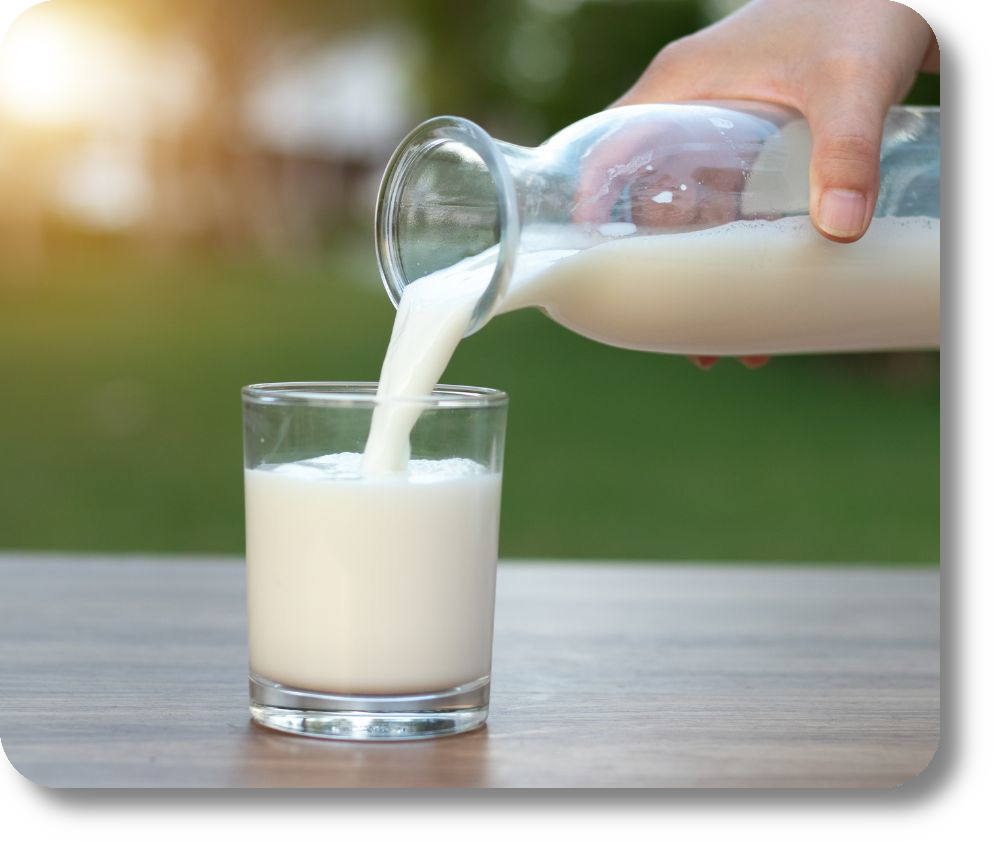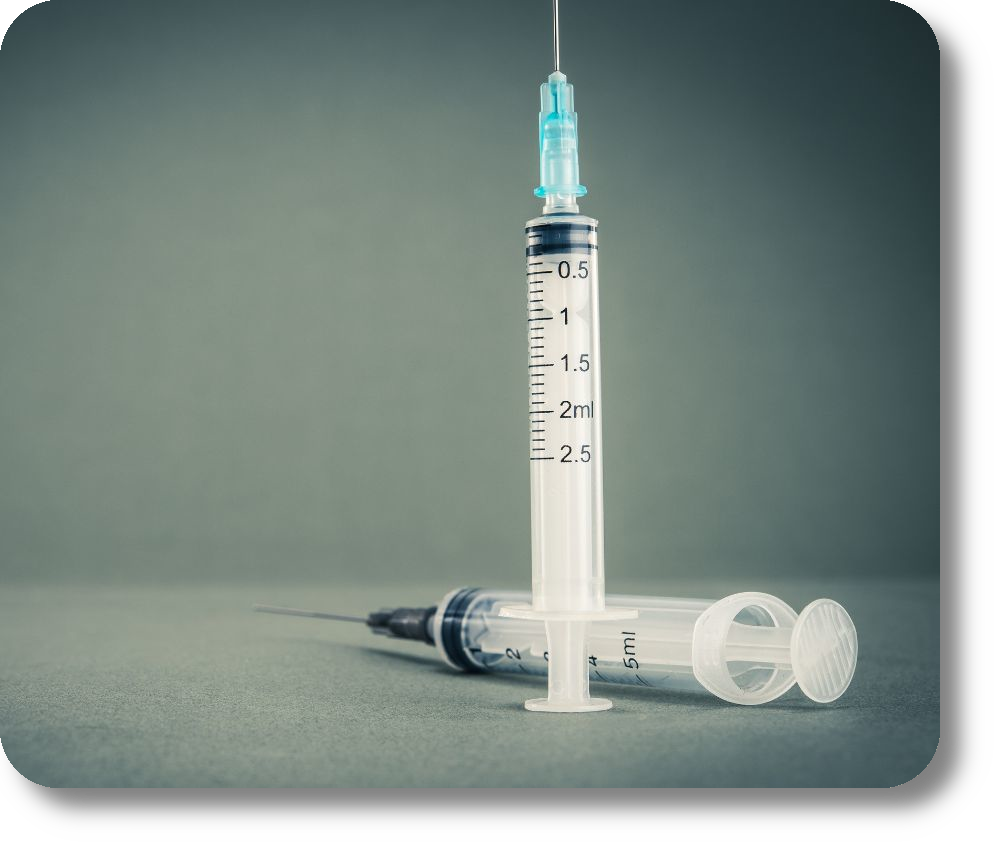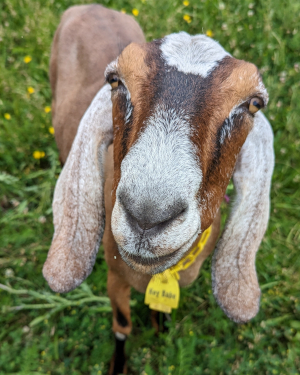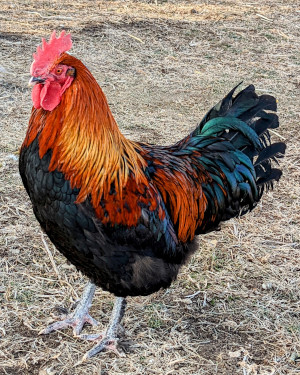
Raw Milk For Sale In Iowa
As of July 1, 2023 it will legal for producers with 10 or fewer dairy animals in milk to sell raw milk in Iowa thanks to the Iowa raw mik bill! You will be able to get fresh, nutritious raw goat milk from our farm in Lorimor, Iowa, just fifteen minutes south of Winterset. We can also deliver it to you in Winterset, Des Moines, or surrounding areas. By law we cannot deliver to a farmer's market or an establishment where food is sold, and we can only distribute milk to the end consumer. You cannot have someone else pick up your milk for you. |
|
|||||
 |
Why Raw? Because it's legal for us to sell raw milk, and not legal for us to sell pasteurized milk. We'd offer both if it were. We understand that there's a strong debate about drinking raw vs. pasteurized milk. ANY milk that's handled unhygenically can be contaminated and grow pathogenic bacteria. Including milk that has been pasteurized. It's important to always store milk below 45 degrees (38 or below for freshest flavor), and keep it in a clean, sterilized container. Where we come down on this issue is that we strongly believe consumers should buy products from local farmers whose agricultural practices align with their own values. We are happy to sell our milk to those who would drink it raw, and just as happy to sell it to those who prefer to pasteurize. It is not our job or our right to convince you of one over the other. We feel very comfortable about our sanitization and milking practices, and whether you choose to drink raw or pasteurize, you can be assured you're getting a quality product that has been scrupulously handled from start to finish. |
|||||
|
How Our Raw Milk Is Produced UV Sanitization We milk twice daily. All of our milk-handling implements (jars, lids, milk pail, strainer, etc) are washed and then cycled at least 20 minutes through a UV chamber for sanitization prior to touching milk. If you're interested in how UV-C sanitization works, here's a video on the process from a PhD-holding microbiologist from the University of Iowa. We do not use the specific brand of UV sanitizer he used in the video, but instead a larger one, marketed and sold for sanitizing dental implements. Udder Grooming We regularly clip udders, tails, rear ends, and bellies to keep dirt and hair from getting in the milk (like getting a really short buzz cut). We call this a "sanitary clip," or a "milk clip." |
 |
|||||
|
Udder Pre-Wash & Mastitis Screening When we sit down to milk, the first thing we do is spray each teat with Fight Bac, a clorhexidine disinfectant spray. We set a timer for 30 seconds, then the teats are wiped dry with disinfectant wipes intended for dairy use. Then we wipe down the foreudder and belly, rear udder, and the inside of the back legs. This is to dislodge any loose dirt or hair, to prevent them from falling in the milk. Then hands are cleaned with hand sanitizer. Next, we "strip" each teat into a cup - this is squeezing a few squirts of milk from each teat and examining it for any signs of clumps/stringiness/etc, which might indicate mastitis. Stripping also flushes away any bacteria that might have been up inside the teat canal. This strip milk gets discarded. Once a week we do a California Mastitis Test at this point, which is a quick screening for potential subclinical mastitis. A couple of squirts of milk from each teat are mixed with a reagent and we look for a reaction that indicates a high number of white blood cells present. This allows us to catch any infection long before it becomes a problem, and dispose of any potentially mastitic milk. We also have the culture plates necessary to culture and identify what organism is causing an infection, as not all mastitis-causing bacteria respond to the same treatments. In this way, we avoid unneccesary antibiotic usage, but are also able to tell when the wellbeing of our animal depends upon an antibiotic. If an antibiotic is ever used, we keep a record which can be provided upon request, withhold milk for the recommended time period, and re-culture to make sure the infection is clear before using that animal's milk for consumption. |
Milking Then we milk into a sanitized stainless steel pail with a pour spout. As the pail fills, we pour the milk into a sanitized glass jar in a bucket of ice. We keep the lid on the jar between pours, and never touch the inside of the lid, or set the lid down on any surface, to minimize any potential contamination. Post-Milking Disinfection Once the doe is milked out, her teats are once again sprayed with Fight Bac, which helps prevent mastitis from bacteria entering the now-open teat canals. Filtering, Chilling, & Storage After milking, the doe is turned out onto pasture, and we take the milk jar and equipment inside. Hands are washed again, and then the milk gets immediately filtered into new sanitized glass jars. The jars are lidded, marked with the date, and then placed in a fresh bucket of ice in a freezer for 1 hour. Then they are moved to a refrigerator that maintains a temperature just above freezing. The ice bucket is washed, and new ice used for each milking. In accordance with Iowa law, all our milk is sold within 7 days of milking. When you pick up milk, please have a cooler with ice or ice packs ready to keep it cold. It needs to remain below 45 degrees. |
|||||
 |
Biosecurity & Health Testing We conduct annual blood tests for common goat diseases each year, including Caprine Arthritis Encephalitis (CAE), Caseous Lymphadenitis (CL), Johne's Disease, and Q-Fever. These tests results are available for you to view here. Our veterinarian tests for Brucellosis and Tuberculosis, which are transmissable to humans. |
|||||
|
Milk Contamination Testing Each of our animals' milk is tested each month for Total Coliform and a Standard Plate Count. We are required to maintain records of every test done for a period of three years, and to provide those records to customers upon request. Our most recent test results must be posted at point of sale, and we also have them here on our website for review. Total Coliform tests are often indicators of fecal and environmental contamination. They occur most often due to dirty animals or improperly santized equipment, but also can occur in animals with a mastitis infection. Improper chilling can cause overgrowth of coliform bacteria that are present in milk. By law, we must test at less than 10 colony forming units (cfu)/ml on a total coliform test to sell raw milk. Standard Plate Count Tests are used to estimate the population density of bacteria in raw milk. The SPC grows all kinds of bacteria that exist in raw milk, even the good bacteria. By law, we must test at less than 25,000 colony forming units (cfu)/ml on a standard plate count to sell raw milk. |
 |
|||||
|
Reliability of Testing For these tests to be an accurate indicator of how sanitary and safe someone's milking practices are, they should be performed on milk that has been collected via the farmer's usual milking practices, then filtered and chilled. The sample should be taken from the container the milk would be served out of. |
If someone takes a sample directly from the teat instead of from a ready-to-serve container of chilled milk, or does anything different on test day than they do on every other milking, than these tests are not an accurate reflection of the bacterial quality of the milk you are likely to be consuming and should not be relied upon as an indicator of safe milking practices. Always ask your farmer how they take their TC & SPC samples! |


Raw Milk For Sale In Iowa
As of July 1, 2023 it will be legal for producers with 10 or fewer dairy animals in milk to sell raw milk in Iowa!
You will be able to get fresh, nutritious raw goat milk from our farm in Lorimor, Iowa, just fifteen minutes south of Winterset. We can also deliver it to you in Winterset, Des Moines, or surrounding areas.
By law we cannot deliver to a farmer's market or an establishment where food is sold, and we can only distribute milk to the end consumer. You cannot have someone else pick up your milk for you.
Learn how to buy our raw milk.

Why Raw?
Because it's legal for us to sell raw milk, and not legal for us to sell pasteurized milk. We'd offer both if it were. We understand that there's a strong debate about drinking raw vs. pasteurized milk.
ANY milk that's handled unhygenically can be contaminated and grow pathogenic bacteria. Including milk that has been pasteurized. It's important to always store milk below 45 degrees (38 or below for freshest flavor), and keep it in a clean, sterilized container.
Where we come down on this issue is that we strongly believe consumers should buy products from local farmers whose agricultural practices align with their own values. We are happy to sell our milk to those who would drink it raw, and just as happy to sell it to those who prefer to pasteurize. It is not our job or our right to convince you of one over the other.
We feel very comfortable about our sanitization and milking practices, and whether you choose to drink raw or pasteurize, you can be assured you're getting a quality product that has been scrupulously handled from start to finish.

How Our Raw Milk Is Produced
UV Sanitization
We milk twice daily. All of our milk-handling implements (jars, lids, milk pail, strainer, etc) are washed and then cycled at least 20 minutes through a UV chamber for sanitization prior to touching milk.
If you're interested in how UV-C sanitization works, here's a video on the process from a PhD-holding microbiologist from the University of Iowa. We do not use the specific brand of UV sanitizer he used in the video, but instead a larger one, marketed and sold for sanitizing dental implements.
Udder Grooming
We regularly clip udders, tails, rear ends, and bellies to keep dirt and hair from getting in the milk (like getting a really short buzz cut). We call this a "sanitary clip," or a "milk clip."
Udder Pre-Wash & Mastitis Screening
When we sit down to milk, the first thing we do is spray each teat with Fight Bac, a clorhexidine disinfectant spray. We set a timer for 30 seconds, then the teats are wiped dry with disinfectant wipes intended for dairy use. Then we wipe down the foreudder and belly, rear udder, and the inside of the back legs. This is to dislodge any loose dirt or hair, to prevent them from falling in the milk. Then hands are cleaned with hand sanitizer.
Next, we "strip" each teat into a cup - this is squeezing a few squirts of milk from each teat and examining it for any signs of clumps/stringiness/etc, which might indicate mastitis. Stripping also flushes away any bacteria that might have been up inside the teat canal. This strip milk gets discarded.
Once a week we do a California Mastitis Test at this point, which is a quick screening for potential subclinical mastitis. A couple of squirts of milk from each teat are mixed with a reagent and we look for a reaction that indicates a high number of white blood cells present. This allows us to catch any infection long before it becomes a problem, and dispose of any potentially mastitic milk.
We also have the culture plates necessary to culture and identify what organism is causing an infection, as not all mastitis-causing bacteria respond to the same treatments. In this way, we avoid unneccesary antibiotic usage, but are also able to tell when the wellbeing of our animal depends upon an antibiotic. If an antibiotic is ever used, we keep a record which can be provided upon request, withhold milk for the recommended time period, and re-culture to make sure the infection is clear before using that animal's milk for consumption.
Milking
Then we milk into a sanitized stainless steel pail with a pour spout. As the pail fills, we pour the milk into a sanitized glass jar in a bucket of ice. We keep the lid on the jar between pours, and never touch the inside of the lid, or set the lid down on any surface, to minimize any potential contamination.
Post-Milking Disinfection
Once the doe is milked out, her teats are once again sprayed with Fight Bac, which helps prevent mastitis from bacteria entering the now-open teat canals.
Filtering, Chilling, & Storage
After milking, the doe is turned out onto pasture, and we take the milk jar and equipment inside. Hands are washed again, and then the milk gets immediately filtered into new sanitized glass jars. The jars are lidded, marked with the date, and then placed in a fresh bucket of ice in a freezer for 1 hour. Then they are moved to a refrigerator that maintains a temperature just above freezing. The ice bucket is washed, and new ice used for each milking.
In accordance with Iowa law, all our milk is sold within 7 days of milking. When you pick up milk, please have a cooler with ice or ice packs ready to keep it cold. It needs to remain below 45 degrees.

Biosecurity & Health Testing
We conduct annual blood tests for common goat diseases each year, including Caprine Arthritis Encephalitis (CAE), Caseous Lymphadenitis (CL), Johne's Disease, and Q-Fever. These test results are available for you to view here.
Our veterinarian tests for Brucellosis and Tuberculosis, which are transmissable to humans.

Milk Contamination Testing
Each of our animals' milk is tested each month for Total Coliform and a Standard Plate Count. We are required to maintain records of every test done for a period of three years, and to provide those records to customers upon request. Our most recent test results must be posted at point of sale, and we also have them here on our website for review.
Total Coliform tests are often indicators of fecal and environmental contamination. They occur most often due to dirty animals or improperly santized equipment, but also can occur in animals with a mastitis infection. Improper chilling can cause overgrowth of coliform bacteria that are present in milk. By law, we must test at less than 10 colony forming units (cfu)/ml on a total coliform test to sell raw milk.
Standard Plate Count Tests are used to estimate the population density of bacteria in raw milk. The SPC grows all kinds of bacteria that exist in raw milk, even the good bacteria. By law, we must test at less than 25,000 colony forming units (cfu)/ml on a standard plate count to sell raw milk.
Reliability of Testing
For these tests to be an accurate indicator of how sanitary and safe someone's milking practices are, they should be performed on milk that has been collected via the farmer's usual milking practices, then filtered and chilled. The sample should be taken from the container the milk would be served out of.
If someone takes a sample directly from the teat instead of from a ready-to-serve container of chilled milk, or does anything different on test day than they do on every other milking, than these tests are not an accurate reflection of the bacterial quality of the milk you are likely to be consuming and should not be relied upon as an indicator of safe milking practices.
Always ask your farmer how they take their TC & SPC samples!






